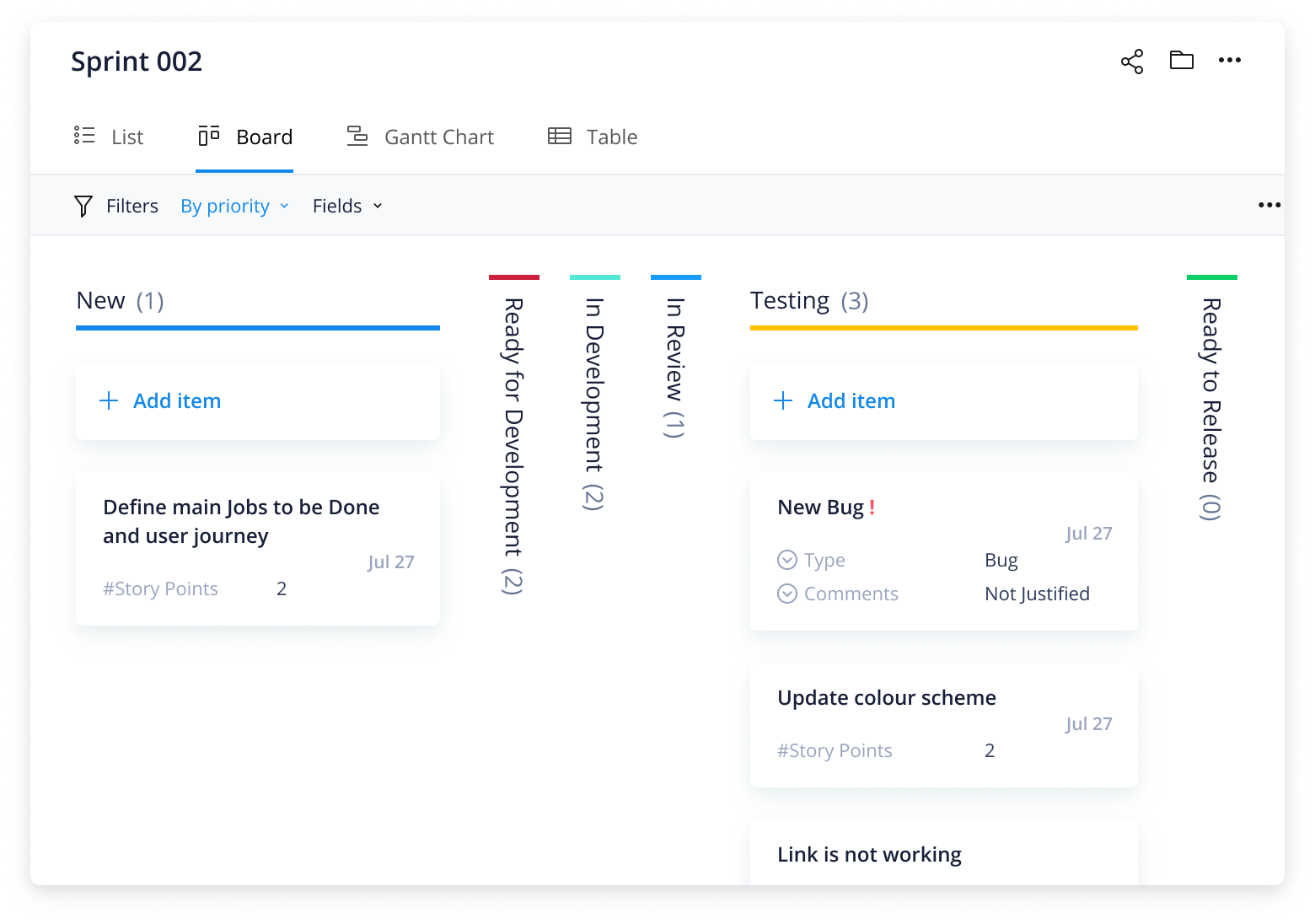- 1. What Is the Agile Manifesto?
- 2. The Benefits and Advantages of Agile
- 3. What Is Agile Operations?
- 4. The Agile Software Development Life Cycle
- 5. Building an Agile Team Structure
- 6. A Guide to the Scaled Agile Framework (SAFe)
- 7. Agile and Lean Portfolio Management
- 8. Understanding Squads, Tribes, and Guilds
- 9. What Is Agile Transformation?
- 10. Themes, Epics, Stories, and Tasks in Agile
- 11. A Complete Guide to Agile Epics
- 12. How to Create User Stories
- 13. Agile Estimation: Understanding Story Points
- 14. Using Gantt Charts in Agile
- 15. Glossary
- 16. FAQs
- 1. What Is the Agile Manifesto?
- 2. The Benefits and Advantages of Agile
- 3. What Is Agile Operations?
- 4. The Agile Software Development Life Cycle
- 5. Building an Agile Team Structure
- 6. A Guide to the Scaled Agile Framework (SAFe)
- 7. Agile and Lean Portfolio Management
- 8. Understanding Squads, Tribes, and Guilds
- 9. What Is Agile Transformation?
- 10. Themes, Epics, Stories, and Tasks in Agile
- 11. A Complete Guide to Agile Epics
- 12. How to Create User Stories
- 13. Agile Estimation: Understanding Story Points
- 14. Using Gantt Charts in Agile
- 15. Glossary
- 16. FAQs
What Is Planning Poker?
Planning poker is a planning and estimation technique used by Agile teams after a product backlog has been created. The setup of this technique helps software teams accurately estimate product development time frames, improve collaboration, and strategize the work to be done.
Planning poker in Agile is usually played by several estimators across all departments in product development — from the Scrum master to product managers, developers, QA testers, and UX designers.
How to play planning poker
The product manager begins the process by describing the user story to the estimators. This helps the estimators gain a better understanding of the product features. The estimators can also ask questions in case a certain feature isn’t clear to them.
The estimators are then given Agile poker cards with the Fibonacci sequence: 1, 2, 3, 5, 8, 13, 21. With different decks of cards, there may be slight variations to this sequence. These values represent each person’s estimation of the story points.
As soon as the estimators are done assessing the user story, they reveal their cards at the same time. If the estimators choose the same number, a consensus is reached, and they can move on to the next story point. However, this may not always be the case. Sometimes, the estimators’ numbers could differ.
If this happens, the estimators discuss their estimates. Those with the highest or lowest number give reasons for their choice of number and try to get other estimators to consider their perspective. After a brief discussion, all participants repeat the Agile poker planning technique until a common number is established.

Advantages of planning poker
For Agile teams, planning poker is a great addition to the product planning and development process. It encourages team collaboration and ensures both realistic and accurate timelines as it is a consensus-based process.
Just like an online game of poker, you can also play Agile poker online. This is helpful especially for remote teams that don’t have the opportunity to meet in person. The planning poker process remains virtually the same and is a great resource for prioritizing items in the backlog.

Alex Zhezherau
Alex is Wrike’s Product Director, with over 10 years of expertise in product management and business development. Known for his hands-on approach and strategic vision, he is well versed in various project management methodologies — including Agile, Scrum, and Kanban — and how Wrike’s features complement them. Alex is passionate about entrepreneurship and turning complex challenges into opportunities.

